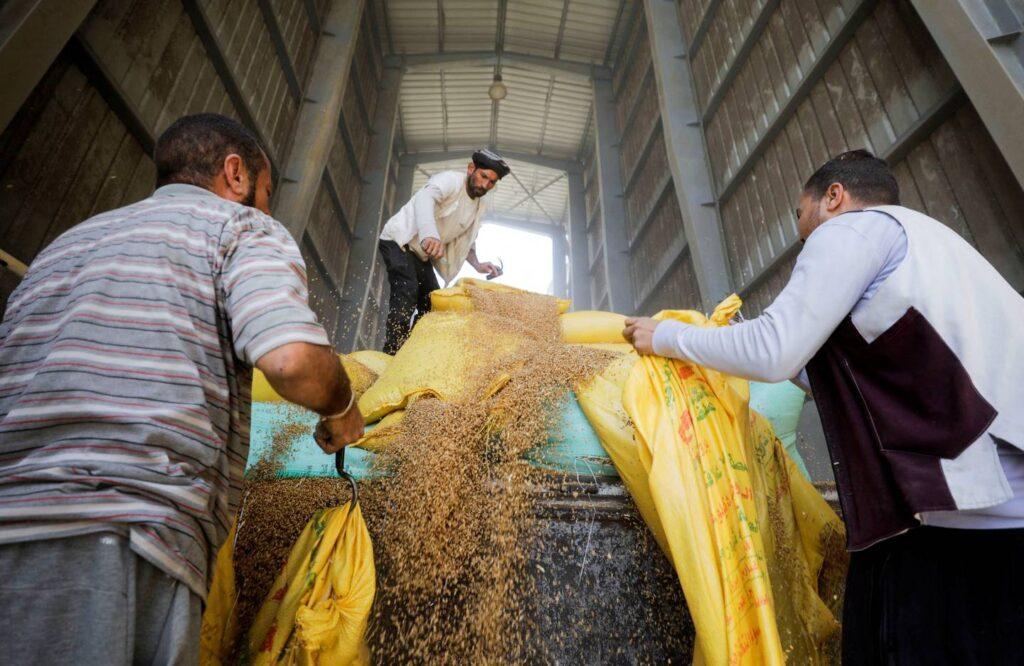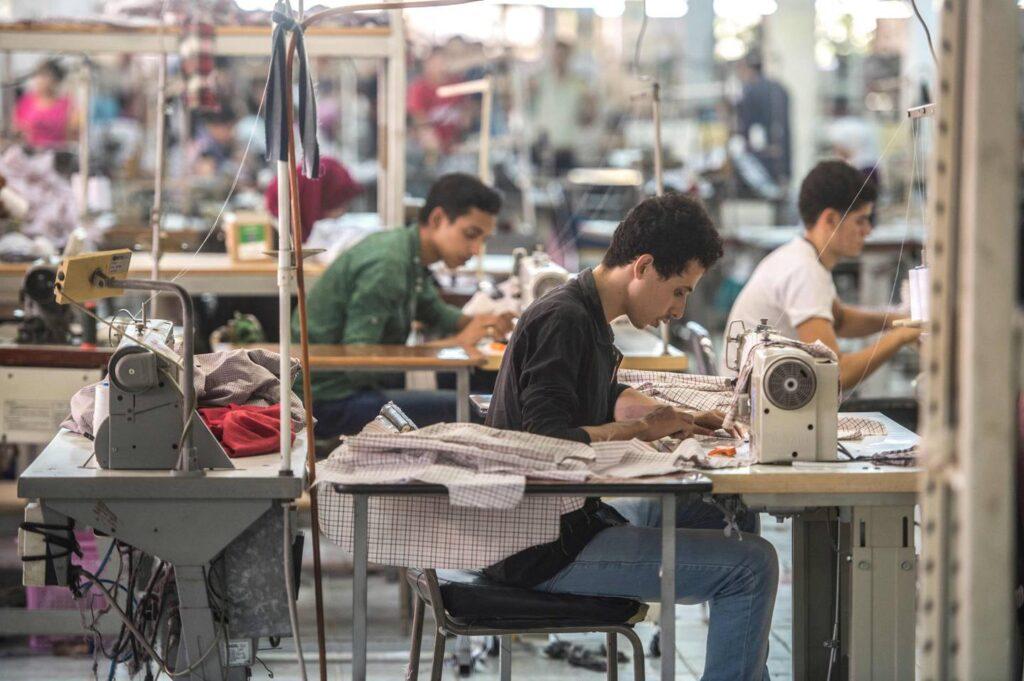
The industrial partnership between the UAE, Egypt and Jordan aims to foster regional economic integration, capitalise on competitive advantages, develop regional supply chains and improve trade prospects, analysts say.
Specifically, the recently-announced partnership will yield economic benefits for the five sectors of mutual and strategic interest, including agriculture, pharmaceuticals, textiles, minerals and petrochemicals in each country.
“Not only would such investments increase value-add and productivity, it will also help these nations to integrate into the global supply chain — resulting in better trade prospects with an increase in exports, reduced costs and maximising firms’ profits,” Nasser Saidi, founder and president of Nasser Saidi & Associates, said.
“Furthermore, being a capital exporter, the UAE can deploy capital and existing technical know-how in the lower-wage cost nations, thereby supporting job creation (and reducing migration), which is imperative for post-Covid recovery.”
Here’s how the partnership could benefit these five sectors in each of the signatory countries.
1. Agriculture, food and fertilisers
Food security is a key objective of the industrial partnership, forged amid the global challenges of the Covid-19 pandemic and the Russia-Ukraine war.
The value of the agricultural and food products market in the three respective countries was estimated at $52 billion in 2019, with an annual growth rate of 11 per cent, according to data from the UAE Ministry of Industry and Advanced Technology (MoIAT). The value of imports such as wheat, fodder, fruits and vegetables, meat and fish reached $37bn in 2019.

“There are opportunities for promising projects to increase fertiliser production and agriculture, especially wheat and corn, and feed production to meet the growth needs in the dairy, meat, poultry, food processing and food packaging sectors,” the ministry said.
The value of wheat and corn imports for the three countries reached $5.8bn annually (21 million tonnes), representing an opportunity to increase production.
Wheat and maize increased from 16.5 million tonnes to about 30 million tonnes annually to meet demand, and the value of meat and fish imports amounted to $4.9bn (1.8 million tonnes).
The three countries also have high potential in fertiliser production, estimated at 7.6 million tonnes annually, which offers “an important platform for expansion projects in fertiliser production to meet the increasing demand”, the ministry said.
The industrial partnership will help avoid food shortages, achieve self-sufficiency and stimulate sustainable economic growth, Hani Berzi, chairman of Jordan’s Food Export Council, said on May 31.
Sanctions on Russia following its invasion of Ukraine and the blockade of Ukrainian seaports have hit food supplies around the world and caused a major energy and food crisis.
In the Middle East, where many countries rely on imports from the two warring European countries for basic foodstuffs, the prices of vegetables, fruit, wheat and essential table items have increased. Prices were already high before the war due to the pandemic, which caused major supply chain disruptions, but inflation soared following the conflict.
The World Food Programme recently issued a warning that the world would face severe food shortages in months if Ukrainian seaports remain blocked by Russia, as more than 20 million tonnes of grain are sitting idle.
“The industrial partnership also underscores the need for improved food security in the future: given climate change, and potential water wars in the future, it would be a win-win for all three nations to support the development of agriculture and food production, especially by tapping technological advancements such as AgriTech and vertical farming,” Mr Saidi said.
2. Pharmaceuticals
Egypt, the UAE and Jordan together have more than 200 pharma factories and export to 90 countries valued at more than $1bn, according to the MoIAT.
The value of the pharmaceutical market in these countries is estimated at $9bn, with an annual growth rate of 7 per cent, it said. The value of the pharmaceutical market of imports reached $5bn in 2019.
The partnership will leverage the UAE’s chemical inputs, its manufacturing capabilities and storage and distribution facilities, according to the ministry.
It will also capitalise on Egypt’s pharmaceutical mega projects to build the largest pharma manufacturing centre in Mena, in addition to leveraging Egypt’s considerable market size and access to a large pool of trained doctors, pharmacists, engineers and skilled technicians.
Jordan has expertise in small molecule manufacturing and establishing a wide reach, exporting its products to 90 countries.

The partnership also seeks to benefit from the increasing development of the UAE in the pharmaceutical sector, which exports medicines to 48 countries.
“There are opportunities for projects in medicines estimated at about $5bn, especially in the field of producing alternative medicines and manufacturing active ingredients for medicines (raw materials),” the ministry said.
3. Clothing and textiles
The value of clothing and textile imports for the three countries amounts to about $9bn annually, which provides “significant opportunities for new projects, especially in the polyester industry, whose imports amount to more than $600 million”, the ministry said.
The textile industry across the three countries is worth $5bn currently, collectively supplying some of the major global brands with fabrics and finished garments, it said.
Egypt has a vertically-integrated textile sector, leveraging competitive labour cost and skills, extensive fabric and garment facilities, a strategic location and exports equivalent to 300,000-plus tonnes of cloth and apparel annually.
Jordan has a competitive export-oriented finished garment sector, benefiting from numerous free-trade agreements with various countries including the US.
The UAE can provide competitive raw materials to support the scaling up of fabric manufacturing in both Egypt and Jordan, the ministry said. Additionally, it also has ready access to large regional markets, such as India, with which it recently signed a Comprehensive Economic Partnership Agreement.
4. Petrochemicals
Petrochemicals are needed in various sectors such as agriculture, food, fertilisers, textiles and pharmaceutical.
In 2019, the combined contribution of the petrochemical industry to the GDP in the UAE, Egypt and Jordan exceeded $16bn, according to MoIAT.
The three countries have access to a range of energy sources, especially natural gas, which is estimated at about 278 trillion cubic feet, in addition to advanced capabilities in the field of petrochemical production and derivatives, which are estimated at about 20 million tonnes per year.
“This paves the way for expansion projects in the petrochemical sector and manufacturing industries which could exceed $21bn,” the ministry said.
5. Metals
The value of the iron, aluminium, metal and steel market in the three countries is estimated at $13bn, with an annual growth rate of 2 per cent, the MoIAT said.
Egypt and Jordan also have large reserves of high-quality silica, which is used in many manufacturing industries, providing a platform for higher value-added industries.
The UAE is one of the world’s five largest aluminium producers, benefiting from its access to bauxite ore, competitive and sustainable energy sources, and advanced technology.
“There are opportunities in the metals sector (aluminium, iron, silica and potash) for projects worth $23bn by using these materials to manufacture higher value products such as glass, electrical wires, car components, solar panels and microelectronic chips,” the ministry said.
